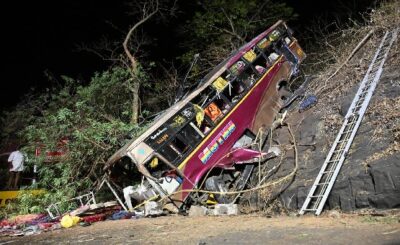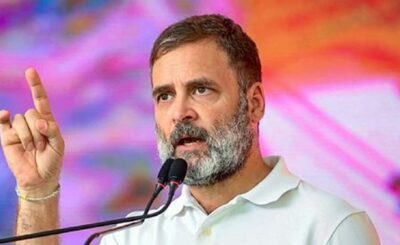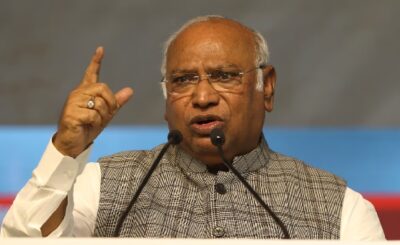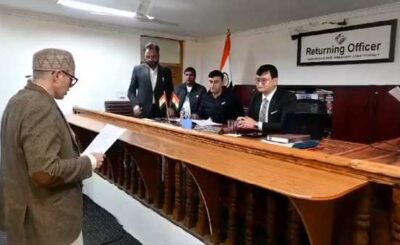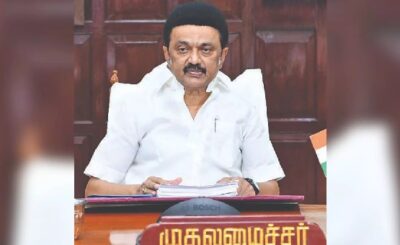Manmade groundwater storage need of hour
-: R. Muthu Kumar :-
Nature is a great giver, but are we ready to receive it’s gift! That is what we have to ponder about as we face the aftermath of mammoth rain that left most of Chennai in tatters apart from pounding the neighbouring Districts.
The average annual rainfall is about 140 cms. The city gets most of its seasonal rainfall from the North East monsoon from mid-September to mid-December. Cyclones in the Bay of Bengal sometimes hit the city causing heavy rainfall and resultant flooding of streets with some areas suffering water-logging for days on end. The highest annual rainfall recorded was 257 cms in 2005.
Nungambakkam and Meenambakkam observatories recorded 53cm and 52 cm from Dec 3 to 4 as the cyclone Michaung crossed the Chennai coast at a distance of 90 kms at a very slow pace. Due to this stagnation the rains were heavy and poured for almost 24 hours.
Chennai thus received half of its regular rainfall in just about 16 hours! An interesting analogy would be a comparison to our human system wherein the normal dietary intake needs about four hours to digest. If we gorge too much of food, the digestive system will surely breakdown causing physical upheaval. A similar situation occurred in 2015 and 2023 (December 4) when the city imbibe an immense amount of water resulting in the drainage system totally collapsing.
In fact, Chennai’s predicament reflects a global reality. From rising sea levels to unleashing sudden fury, nature sends messages that demand our attention. Floods, droughts and wildfires are not merely disastrous acts of nature but also urgent attention seekers imploring us to reassess our preparedness and strategy to live on this planet.
We need totally new systems that can absorb the bounty that Nature offers and channel it for sustainable development. Chennai did save many lives, thanks to Chief Minister Stalin’s timely efforts. Like he pointed that the proper utilisation of Rs. 4,000 crore for preparing and improving Chennai’s infrastructure to face natural disasters helped mitigate human casualties.
Advance declaration of holiday on December 4 for educational institutions and offices also helped in ensuring safety of citizens.
But what about those stuck in their hostel their campuses? At many hostel campuses, students were left in the lurch without food, power or any connectivity to reach out to their families to confirm their safety. It is not possible for the Government to take action at that juncture but in future precautions should be taken to ensure such suffered too are taken care of.
To receive nature’s gifts is a huge responsibility of the Government and the people. As the skies open up, the water should be channelised fill reservoirs, recharge aquifers and nurture the earth. During drought, solar panels should harness sun’s energy, providing a lifeline to parched lands. Preparedness is the key that unlocks nature’s treasures. It is time for the planners, politicians and experts to think on lines of creating new water ways below the ground level.
The water level on December 3 in most water bodies around Chennai was nearly a feet above ground level. Which meant basements and underground parking lots were floating in water even before the cyclonic rainfall.
But to the surprise of many in Chennai and it’s suburb, Metro lines were not damaged nor hindered by the flooding water! Metro trains in Chennai are mostly underground to the depth of two floors below and rest the ply above the ground level.
Water tends to flow deep down the ground level in its natural flow leveraging the gravitational force and slopes available. The State must prepare a data base to map vulnerable areas were flooding water accumulates in large quantities. Such areas would mostly be located along sea coasts and town planners must now mull underground storage akin to depths of metro trains.
Costs may be burgeoning into lakhs of crores in the present economic situation but such a system will pay in the long run especially with urbanisation taking place at a rapid shape. Since 1947, Chennai is seeing an influx from rural Tamil Nadu and the population growth due to urbanisation led to conversion of wastelands, water bodies and cultivatable fields into mushrooming residential accommodations.
The population influx resulted in focussing on a better road transport system with the State seeking investment funds from the World Bank. Later the industrial growth led to further population increase and Chennai saw the expansion of local train services, the development of MRTS trains based on big financial back up from international funders.
With the boom in the software, IT and ITES sector, global attention focussed on Chennai and the need to develop a quicker and savvier transport system resulted in the launch of the Metro train services – running underground and overhead to meet growing transport demands of the burgeoning population.
The repeated flooding during monsoons with aggravated water flow during 2008, 2015 and 2023 throws up the question of how we can salvage and store rainwater for future use. The concept of rainwater harvesting needs to undergo a paradigm shift to conserve the excess rainwater and utilise it purposefully for the benefit of the growing urban population.
The Metro rail tunnels can perhaps provide some keys to overcoming the challenges of retaining the hugely excessive rainfall and convert it into a natural boon rather than think of it as a bane. Having overcome the challenges of constructing underground tunnels even in tough terrains, the time is now ripe perhaps for town planners to think of similar strategies to created massive underground tanks to store rainwater.
Having destroyed lakes, waterbodies and other ecosystems to create housing and related concrete jungles, the society must now think of giving back to society to restore the eco balance.
HPCL’s cavern at Visakhapatnam, which opened in December 2007, is a good shining example. This is one of the world’s deepest underground liquefied petroleum gas (LPG) storage cavern projects which has been built 160 meters underground on a land space of nearly 14 acres along the sea coast near Visakhapatnam. By the way the LIC building in Chennai is only 54 metres high!
I was among a handful of media persons to enter the depth and walk around the cavern. The makeshift lift travelled nearly triple the height of the 14-loor LIC building in Chennai. Later then Prime Minister Manmohan Singh dedicated the cavern to country after taking a look at the facility under the ground.
After that the entire facility to save 60,000 metric tonne was sealed in such a way that not even air or oxygen could seep in via the valve system. The cavern has a capacity to save the entire country’s LPG needs for at least 10 days! The costs involved must have been Himalayan but we demonstrated that we could invest and create such a facility.
If a similar project is envisaged then the proposed underground water cavern can be used to meet Chennai’s water demands and agricultural purposes in a radius of up to 200 kms! Investments for such a mega project can be tapped from World Bank, BRICS New Development Bank and other global financial organisations will surely be happy to be associated with such a project if properly planned.
Such an effort will be a shining example for sustaining habitable planet. Underground water ways are not alien to this planet. In fact, the Grand Canyon is natural, but has more than 60 hydropower units passing through no less than 11 different national parks and monuments as it tumbles through the varied landscapes of seven States and two countries. It’s a critical water supply for agriculture, industry, and municipalities from Denver to Tijuana, which fuels a $ 1.4 trillion annual economy.
The Hoover Dam is another concrete arch-gravity dam in the Black Canyon of the Colorado River, on the border between the US States of Nevada and Arizona. This 19th century manmade wonder has a height of 221.4 metres and length of 379 metres.
In this era of innovation, it may not be impossible to visualise a massive underground water cavern in the vicinity of Marina and it’s neighbourhood!
To start with airports, industrial estates and large residential areas can have such a system to drain it’s excess water and stored under their bellies!
In early 2000, then Chief Minister Jayalalithaa laid the road map for rainwater harvesting. Now in 2023, it’s time for present Chief Minister Stalin to show his vision for Chennai to sustain the precious water resource for posterity. If he envisages such as step, it will be a grand vision that will help humans to survive against all odds.



